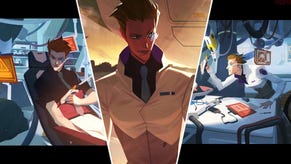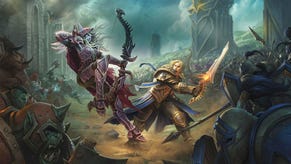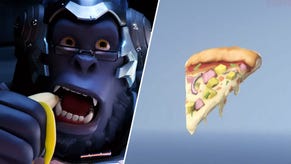The Overwatch League’s debut broadcast proved it can challenge the top esports
More than a year after the competition was first announced, the Overwatch League finally got underway in the early hours of this morning. And boy, did it deliver.
Five of the initial 12 teams competed in the first three preseason matches, with the San Fransisco Shock, Florida Mayhem, Los Angeles Valiant, Seoul Dynasty and Shanghai Dragons taking to the impressive stage.
These preseason matches were the test bed. It gave Blizzard a chance to test out the arena setup, refine the areas of the broadcast that still need work and give everyone involved a chance to get used to the setup and broadcast before the big launch early next year. As a result many, myself included, imagined these first few broadcasts might be a little ropey, with tech delays, mistakes and a disappointing product, and that would have been totally fine, because this is a trial run.
In fact the exact opposite was true. The broadcast was near flawless, the arena is one of the most impressive permanent stages we have seen in esports and amazingly there was no tech delays. This was day zero for the Overwatch League, but already it is challenging the likes of the LCS (League of Legends) and ELEAGUE as the most impressive esports broadcasts out there.
For years people have complained that Overwatch is difficult to watch, and yes that is still the case a times, but Blizzard has done everything they can to make sure that the Overwatch League is as simple as possible. We saw the return of the colour coordinated skins, which made the World Cup a much simpler broadcast, clearly showing what team each character is on. No longer do you have to work out which hero is on which team. The only minor complaint here is that hero outlines, which show positions through walls are all the same color. Make these team specific and this area of the broadcast is as good as it will every get.
It was also clear that a lot of thought has gone into what is shown on screen. Sure, it’s still easy to get disorientated when watching a Genji ult in first person, but often they are ignored or shown from a different angle. The team also seemed to favour going to a Widowmaker, which was a common pick in most games. Being able to watch a sniper who stands at the back and watches the whole fight makes it easy to watch while still seeing some great skill with impressive flicks. When the meta changes and Widomaker returns to trash tier this will of course be an issue, but for now it seems the observers know what works and what doesn't.
Add in the casters and things get even better. The casting team that Blizzard has assembled is truly impressive. Christopher "MonteCristo" Mykles and Erik "DoA" Lonnquist are legends of esports, being the voices of the Korean League of Legends scene for years, while Mitch "Uber" Leslie and Matt "Mr X" Morello are names who have floated around esports for a while but seem to have found their new home in Overwatch. Both duos managed to create narratives throughout the matches, but crucially would call out things that the camera many have missed. If you speak the language of Overwatch these guys provided key extra information.
Outside of the broadcast specifics the most impressive area was the stage itself. There is no booths in sight, with players out in the open air using noise cancelling headsets to drown out the casters. The main screen is of a solid size for the audience in attendance, but even more impressive is that the whole stage is a screen. The entire area behind the players is lit up with their logos and colours, and when the next map is being set up the whole stage appears to be in the map. It really does look impressive, and is in my mind the best permanent esports stage we have ever seen.
It also helped that the matches were pretty solid, with the match between the San Fransisco Shock and the LA Valiant going down to the wire. Every map was a close affair, with both teams having multiple chances to win it, and then it ended up going to the tie breaker map, which again was very close. If all the teams are this evenly matched then the first season could be something special, and you should certainly try and watch the VoD of that match if you have the chance.
There were a few quirks that irked some, such as the competition only being shown on MLG.TV and not showing any viewing figures, but both moves are entirely understandable. Blizzard will still be looking to do broadcast rights deals, so it will want to keep numbers close to its chest, and will not want to be handing out streams for free to other platforms. It also means that the hardcore fans will search for it, but the more casual fans who just browse Twitch won’t see the OWL until it kicks off for real in January. Irritating yes, but entirely justified.
It seems strange that a lot of people have been quick to criticize the broadcast. Yes, Overwatch is difficult to watch, but in the same way that League of Legends or Dota is difficult to watch. You wouldn’t tune into the LCS for the first time and expect to understand everything that is going on, and the same should be true for Overwatch. It is simpler than LoL, but with hundreds of abilities to learn it will always be a little confusing unless you have played the game or watched a lot. Blizzard’s messaging may not have helped here, as they have often made a point of making the OWL a mainstream league, but this is an issue a lot of big esports have.
There are a few kinks to work out, but the first ever broadcast of the Overwatch League proved that this long wait was worth it. It took League of Legends years to get to where it is now, but the OWL is already challenging the LCS in terms of broadcast quality, production value and general look. No one could have expect the first outing to go this well, and it really does make it seem like the Overwatch League will be up there with the LCS as soon as the main season launches in January. After being one of the league’s biggest critics just a few months ago, I am now a full convert and can’t wait to watch even more tonight.
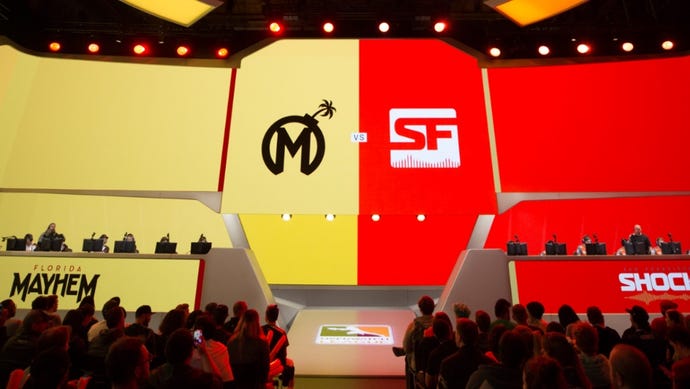





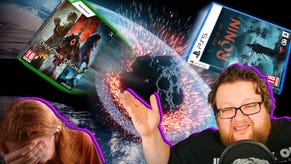
.jpg?width=291&height=164&fit=crop&quality=80&format=jpg&auto=webp)
